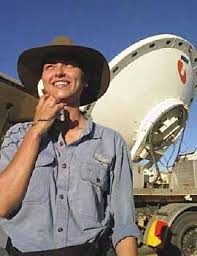
The Australian based Telecommunications giant Telstra is trialing new drone technologies to help in disaster management scenarios.
If you are not familiar with them, Telstra currently has over 35,000 employees and does business in over 15 countries. Telstra now joins a number of telecommunications companies including Verizon that are getting into drone solutions as their networks are utilized in drone solutions.
At the Telstra Vantage showcase, the Telstra Labs team displayed a drone swarm and a mobile “cell on wings” that use 4GX on its mobile network.
The swarms can be controlled by a single pilot and fly in formation to quickly and efficiently map an area impacted by fire or flood. This would be useful for a number of applications where time is of the essence such as search and rescue.
One can also envision where this swarm approach might be used in applications such as large inspections where time and access are important such as large bridges.
This technology is similar in concept to the drone light shows that utilize hundreds or thousands of drones for light shows by companies such as Intel.
They could also be used to cover and search a large area – something that could save lives in an emergency rescue situation, and time and money in less dramatic situations.
To counter that, Telstra Labs have developed a master drone. Think of it is a flying wireless router that allow access and control to the other drones. The analogy being a hub and spoke where the master drone is the telecommunications hub.
That’s done through something called a tethered backhaul, in concept wiring a network cable to the drone from the ground while it is in flight.
Telstra Chief Technology Officer Hakan Eriksson said the drones’ true potential will be realized further following the successful rollout of 5G networks.
He said 5G’s low latency “may allow much more precise real time control over drones and other remotely operated vehicles over the next decade”.
“In the future 5G will allow operators using this type of technology to run missions end-to-end with an extensive data uplink capability,” Eriksson said.
“This would mean being able to stream large sets of live data (such as high resolution video) back to operators to be able to use straight away, and back to the server for even more intelligent decision making.”
CEO DroneLife.com, DroneRacingLife.com, and CMO of Jobfordrones.com. Principle at Spalding Barker Strategies. Has enjoyed working with and around the commercial drone industry for the last 10 years. Attendance and speaker at Industry Events such as Commercial UAV, InterGeo, Interdrone and others. Proud father of two. Enjoys karate, Sherlock Holmes, and interesting things. Subscribe to all things drone at DroneLife here. Email is Harry@dronelife.com. Make Sure that you WhiteList us in your email to make sure you get our Newsletter. Editor1@dronelife.com.